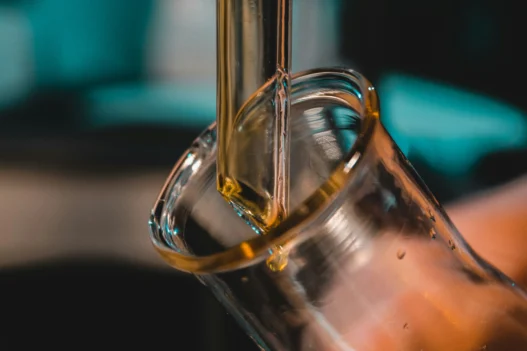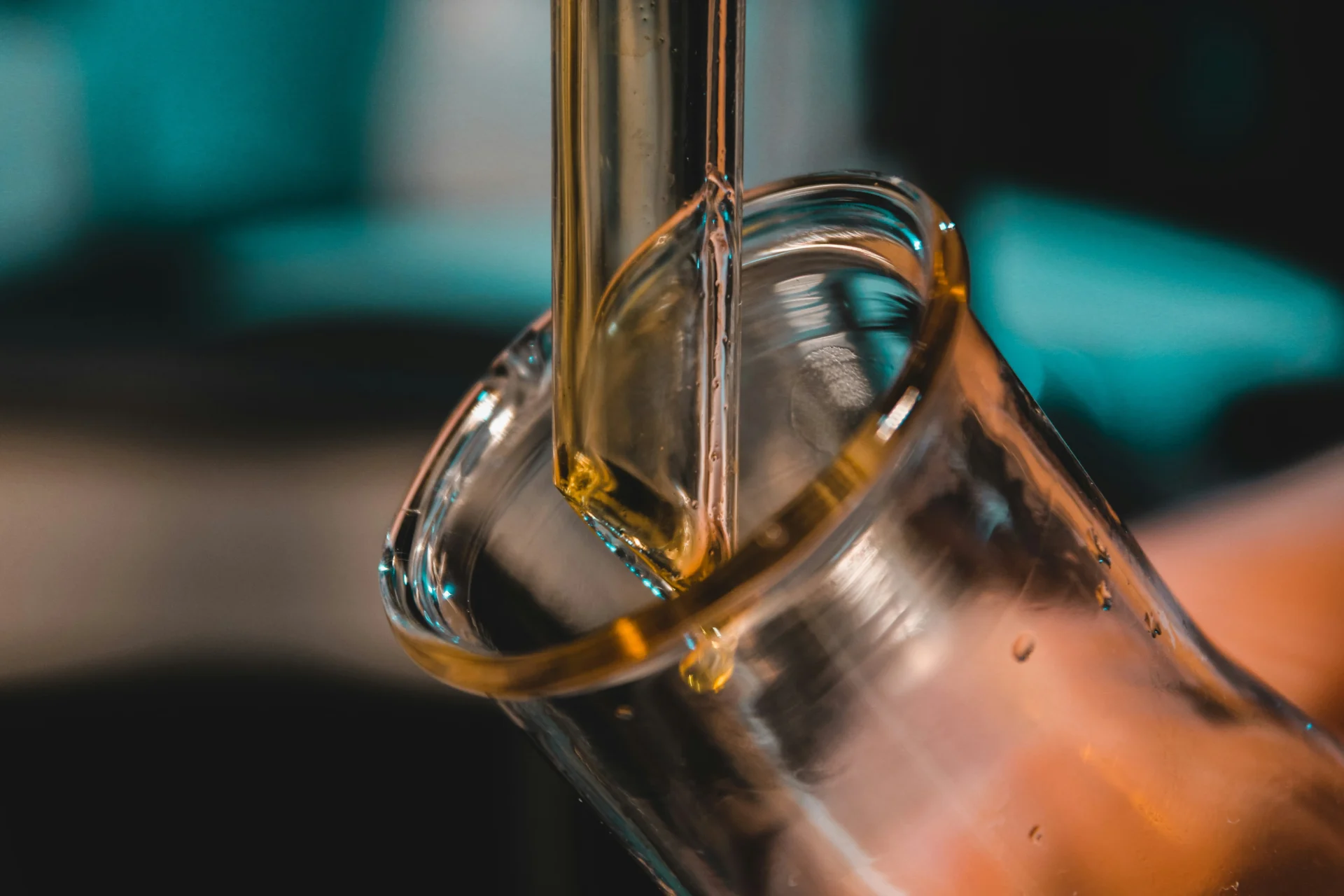Tert-Butyl hydroperoxide, a chemical compound commonly used as a radical initiator in various industrial processes, holds a significant relevance in everyday life. Despite its potential hazards and toxicity, tert-Butyl hydroperoxide is utilized in the production of polymers, plastics, and pharmaceuticals. This compound’s presence in everyday products underscores its importance as a key component in manufacturing processes essential to modern society.
Table of Contents:
- 💡 Commercial Applications
- ⚗️ Chemical & Physical Properties
- 🏭 Production & Procurement
- ⚠️ Safety Considerations
- 🔬 Potential Research Directions
- 🧪 Related Compounds
💡 Commercial Applications
Tert-Butyl Hydroperoxide, a colorless liquid with a pungent odor, finds various commercial and industrial applications. It is commonly used as a radical initiator in the manufacture of polymers and resins. Additionally, it serves as a bleaching agent in the production of paper and textiles. Tert-Butyl Hydroperoxide is also utilized as a crosslinking agent in the creation of silicone rubbers and other elastomers.
In the realm of drug and medication applications, tert-Butyl Hydroperoxide plays a crucial role as a reactive oxygen species in biological systems. It has been studied for its potential use in cancer treatments through its ability to induce apoptosis in cancer cells. Furthermore, researchers are exploring its antioxidant properties for potential therapeutic applications in treating neurodegenerative diseases such as Alzheimer’s and Parkinson’s. Studies have also shown its potential as a protective agent against reactive oxygen species-induced damage in cells.
⚗️ Chemical & Physical Properties
Tert-Butyl Hydroperoxide is a colorless liquid with a pungent odor. It is a highly reactive organic peroxide compound commonly used in chemical processes.
The molar mass of tert-Butyl Hydroperoxide is approximately 90.12 g/mol, with a density of about 0.940 g/cm3. In comparison, common food items such as table salt (molar mass of 58.44 g/mol, density of 2.168 g/cm3) have lower molar mass and higher density.
Tert-Butyl Hydroperoxide has a melting point of -52°C and a boiling point of 82-83°C. These temperatures are much lower compared to common food items like sugar (melting point of 186°C, boiling point above 160°C).
Tert-Butyl Hydroperoxide is insoluble in water and has a low viscosity. In contrast, common food items like sugar and salt are highly soluble in water and have higher viscosities.
🏭 Production & Procurement
Tert-butyl hydroperoxide is primarily produced through the oxidation of tert-butanol with hydrogen peroxide. This reaction is typically carried out using an acid catalyst in a controlled environment to ensure the highest yield and purity of the product. The resulting tert-butyl hydroperoxide is then typically distilled and purified to remove any impurities before being used in various industrial applications.
Tert-butyl hydroperoxide can be procured from chemical suppliers that specialize in producing and distributing organic peroxides and related compounds. It is often available in various grades and concentrations to meet the specific requirements of different industries. The compound is typically transported in specialized containers designed to prevent leakage or reaction with other substances during transit. Due to its reactive nature, proper handling and storage procedures must be followed to ensure safety and prevent accidents during transportation.
When procuring tert-butyl hydroperoxide, it is essential to consider the regulations and guidelines set forth by regulatory bodies such as OSHA and the EPA to ensure compliance with safety and environmental standards. Suppliers may also provide necessary documentation, such as certificates of analysis and safety data sheets, to ensure that proper handling procedures are followed. Additionally, transportation of tert-butyl hydroperoxide may require special permits or licenses due to its classification as a hazardous material, further emphasizing the importance of adhering to safety protocols during procurement and transportation.
⚠️ Safety Considerations
Safety considerations for tert-Butyl Hydroperoxide include its flammability and potential for explosive reactions when exposed to heat or other sources of ignition. This compound should be stored in a cool, well-ventilated area away from heat and open flames. Proper personal protective equipment, such as gloves and goggles, should be worn when handling tert-Butyl Hydroperoxide to prevent skin and eye contact. Additionally, spillages should be promptly cleaned up to prevent accidental exposure.
The hazard statements for tert-Butyl Hydroperoxide include “Causes skin and eye irritation,” “May cause respiratory irritation,” and “May cause drowsiness or dizziness.” These statements indicate the potential risks associated with exposure to this compound, emphasizing the importance of proper handling and safety precautions to prevent adverse effects on health.
Precautionary statements for tert-Butyl Hydroperoxide include “Use only outdoors or in a well-ventilated area,” “Wear protective gloves/eye protection/clothing,” and “Do not breathe dust/fume/gas/mist/vapors/spray.” These statements highlight the necessary precautions that should be taken when working with tert-Butyl Hydroperoxide to minimize the risk of exposure and ensure the safety of individuals handling the compound.
🔬 Potential Research Directions
Research on tert-Butyl Hydroperoxide (TBHP) may focus on its various applications in organic synthesis, such as in the oxidation of alcohols or sulfides. Additionally, investigations into its reactivity and mechanism of action in different chemical reactions can provide valuable insights into its potential as a reagent.
Furthermore, studies on the toxicity and safety aspects of TBHP are essential for understanding its potential risks and hazards in laboratory settings and industrial applications. This includes examining its potential environmental impact and identifying suitable measures for safe handling and disposal.
Exploring the potential use of TBHP as an initiator in polymerization reactions or as a radical initiator in various organic transformations could offer new avenues for the development of novel synthetic methodologies and functional materials. Research on the stability and storage conditions of TBHP can also contribute to optimizing its utilization in research and manufacturing processes.
🧪 Related Compounds
One compound similar in molecular structure to tert-Butyl Hydroperoxide is cumene hydroperoxide. Cumene hydroperoxide possesses an oxygen atom attached to a phenyl group, similar to tert-Butyl Hydroperoxide. This compound is commonly used as a radical initiator in the process of polymerization.
Another compound sharing the molecular structure of tert-Butyl Hydroperoxide is ethylbenzene hydroperoxide. The presence of a hydroperoxy group attached to a benzene ring characterizes this compound, similar to tert-Butyl Hydroperoxide. Ethylbenzene hydroperoxide is often employed as a reactant in chemical synthesis and oxidation reactions.
Peroxyacetic acid is yet another compound akin to tert-Butyl Hydroperoxide in terms of molecular structure. Peroxyacetic acid consists of an organic peroxide group attached to an acetic acid moiety, akin to tert-Butyl Hydroperoxide. This compound is recognized for its strong oxidizing properties and its application in organic synthesis and bleaching processes.









